Travel Tips
Off the Brochure Travel Guide: Manila, Philippines
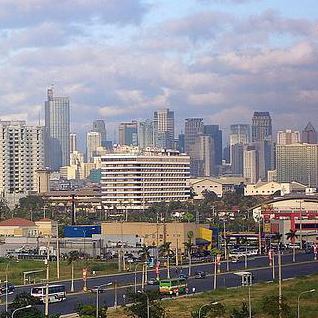 With the nickname of “The Pearl of the Orient,” it is no wonder why people are drawn to the capital of the Philippines.
With the nickname of “The Pearl of the Orient,” it is no wonder why people are drawn to the capital of the Philippines.
Though the weather ranges from “hot” to “hot and rainy,” and the streets can be chaotic, it seems that locals and visitors, alike, tend to maintain an upbeat attitude.
The Philippines has gone through the hands of many countries, meaning that Manila is an intense melting pot of Spanish, Chinese and Filipino culture, architecture and foods, making for an off-the-brochure experience like no other.
GETTING AROUND
Be warned: Metro Manila—which is one of two defined metropolitan areas in the Philippines (the other is Metro Cebu)—is quite large and difficult to navigate due to poor public transportation. If you opt to go your own way, your best bet is to hire a driver (which is relatively inexpensive).
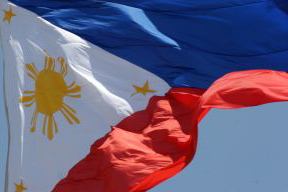 Also in the city, there are privately owned large jeeps known as jeepnies that can travel anywhere in the city; however, there are no marked stops to get on and off (you sometimes literally have to run out in the middle of traffic and jump on), and unless you are with someone who knows the city very well, you’ll find yourself lost and quite possibly in danger.
Also in the city, there are privately owned large jeeps known as jeepnies that can travel anywhere in the city; however, there are no marked stops to get on and off (you sometimes literally have to run out in the middle of traffic and jump on), and unless you are with someone who knows the city very well, you’ll find yourself lost and quite possibly in danger.
Of course, if you are just going around a few blocks past walking distance, you might want to consider riding a calessa. These horse-drawn carriages were originally meant for nobility, but today they are a relatively inexpensive way to get around. The added bonus is that many of the calessa drivers are knowledgeable about the area, so they double as a tour guide. Calessas aren’t found everywhere, but in main tourist areas, such as Intramuros, you’ll find them on every corner.
If you prefer something a bit more modern, look into hiring a tricycle (otherwise known as a pedicab in the United States). Either powered by bicycle or motorcycle, drivers can be hailed or found at tricycle stands all over the city.
FIT FOR A GENERAL
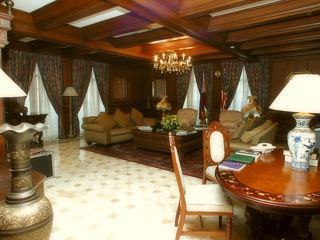 The Manila Hotel has long had the reputation as being the place to stay in Metro Manila. Back in its prime, General Douglas McArthur resided in the penthouse suite during his entire stay in Manila from 1935 to 1941. But the once-opulent hotel became increasingly run-down and worn out over the years. However, a recent grand re-opening in January 2008 updated and modernized the property to be worthy of its five stars. www.manila-hotel.com.ph
The Manila Hotel has long had the reputation as being the place to stay in Metro Manila. Back in its prime, General Douglas McArthur resided in the penthouse suite during his entire stay in Manila from 1935 to 1941. But the once-opulent hotel became increasingly run-down and worn out over the years. However, a recent grand re-opening in January 2008 updated and modernized the property to be worthy of its five stars. www.manila-hotel.com.ph
For a more affordable stay, try to book from the direct Web site or on a trusted partner site (such as Expedia or Hotwire). There are many “unofficial” websites in the Philippines that will book hotels for you; however, they normally charge a large fee for the “booking,” and you can often save money by contacting the hotel directly.
HAVE YOU EATEN?
The customary greeting in the Philippines is, “Kumain ka na?” which literally means, “Have you eaten?” You can bet that Filipinos love to eat, and there is quite a variety of cuisines within the country. Luckily, most of the different foods can be sampled in Manila, so check out these eateries to get some authentic Filipino food. Unlike most other Asian nations, Filipinos eat with a spoon and fork (or with their hands).
For Filipino food with a Polynesian twist, visit Grilla. With two locations in Metro Manila (Makati City and Quezon City), try the “Filipino Feast” which features some traditional dishes such as kare-kare (a peanut butter-based beef and tripe dish), garlic-balsamic chicken, pork adobo (a Spanish dish in which meat is marinated in a sweet and sour broth) and talong ensalada (a type of eggplant salad).
This is meant to be shared, so make sure you bring your friends. If you are daring, try some pinakbet. This salty paste made out of small brine shrimp that, strangely, perfectly complements fresh fruit. www.grilla.com/index.html
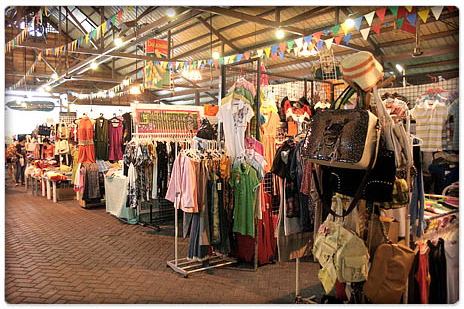 A great place to go shopping for Filipino and other antiques, Tiendesitas is a collection of stores in Pasig City, which is also home to “mom-and-pop” food stands that prepare food just like it. Most people in the Philippines speak English, so if something looks strange in your dish, feel free to ask what it is. Admittedly, there are some strange dishes such as balut (duck fetus) and adidas (chicken feet) that only the most adventurous foodies might want to try.
A great place to go shopping for Filipino and other antiques, Tiendesitas is a collection of stores in Pasig City, which is also home to “mom-and-pop” food stands that prepare food just like it. Most people in the Philippines speak English, so if something looks strange in your dish, feel free to ask what it is. Admittedly, there are some strange dishes such as balut (duck fetus) and adidas (chicken feet) that only the most adventurous foodies might want to try.
Also, check out the local fruit stands. Due to the Philippines’ climate, many fruits are native to the country and can only be found here. If it is in season, look for duhat (or “Java plum”), a grape-like fruit that tastes great with salt, or atis—an artichoke-looking fruit known in English as the “sugar apple.” www.tiendesitas.com.ph/
To try some food from the Pampanga region, visit Abe at Serendra Circle’s in Fort Bonifacio. The island region has many must taste dishes, such as rellenong mais, a mixture of sweet corn, shrimp bits, flour and egg or cool off with a tamarind shake, a cold drink made from the sticky, sour and sweet fruit. www.munchpunch.com/restaurants/3819.aspx
A MIXTURE OF CULTURES
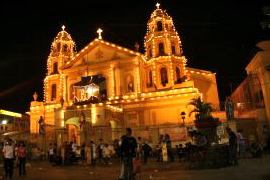 Although the Philippines was colonized by Spain, it was heavily influenced by the surrounding Asian countries, especially China. Many museums show the history of the country through exhibitions of what the country was like back in the day.
Although the Philippines was colonized by Spain, it was heavily influenced by the surrounding Asian countries, especially China. Many museums show the history of the country through exhibitions of what the country was like back in the day.
The Bayay Tsinoy (literally Chinese House) shows the history of the Philippines through the eyes of the Chinese settlers that have lived in the country for centuries. See how many Filipino words were influenced by the Chinese Fukien. The museum displays what life was like for early Chinese settlers in the Philippines, who were often segregated from Spanish leaders and native Filipinos. There is also an exhibit of influential Chinese-Filipino citizens, including important journalists and businessmen who have changed the face of the country. www.kaisa.ph/Bahay_Tsinoy_text.html
If you ever wanted to see what life was like when the Spanish ruled the Philippines, look no further than Casa Manila. The museum is actually an old-style Spanish house that was restored and kept as it would have been during its heyday. See the old Spanish style architecture, as well as wood furniture that filled the insides of the home. Make sure to stop by the kitchen and see the interesting techniques and contraptions used to cook food during a time when gas and electric stoves did not exist. www.casa-manila.com
Widely considered to be the oldest church in the Philippines, San Agustin Church in Intramuros showcases the Roman Catholic tradition of the nation. Currently, it is one of the four Philippine Baroque churches on UNESCO’s World Heritage List. Built in 1586, it has survived WWI attacks, typhoons and even attacks by the Chinese and Dutch. Don’t forget to climb upstairs where the gargantuan organ and old Filipino hymn books are on display.
GOING GREEN
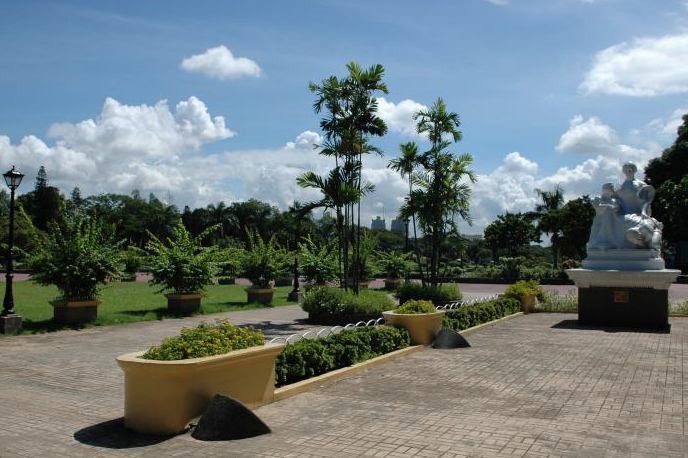 The most popular outdoors in Manila is Rizal Park, aka Luneta Park. Named for Dr. José Rizal, a national hero who fought for political and social reforms for his country, this green sanctuary is in the heart of the bustling city; once you step inside—away from the crazy traffic and crowds of the streets—you’ll feel like you’ve entered another world. You’ll have to work your way through the crowds picnicking and playing (and practicing their tai chi) throughout the park, but definitely visit the Chinese gardens and the adjacent Japanese gardens.
The most popular outdoors in Manila is Rizal Park, aka Luneta Park. Named for Dr. José Rizal, a national hero who fought for political and social reforms for his country, this green sanctuary is in the heart of the bustling city; once you step inside—away from the crazy traffic and crowds of the streets—you’ll feel like you’ve entered another world. You’ll have to work your way through the crowds picnicking and playing (and practicing their tai chi) throughout the park, but definitely visit the Chinese gardens and the adjacent Japanese gardens.
An alternative is Rajah Sulayman Park, which was named after the last king of Manila. Located on the south side of the city, crowds tend to congregate around the dancing fountain into the late hours of night, making it a lively spot for local people-watching.
Another pretty spot is Paco Park and Cemetery, which is walkable from Rizal Park. It was built in the 1820s for casualties of a cholera epidemic, and is the burial site of José Rizal. It’s far less crowed than the more popular parks, and you can even catch free outdoor classical concerts and recitals on Friday evenings.
By Michelle Castillo for PeterGreenberg.com.
Also by Michelle Castillo:
- Culinary Adventures: Discovering Secret Restaurants
- Virgin America: Short-Haul Flights Made for Hipsters?
- Things I Wish I’d Known Before Studying Abroad
- America the Beautiful: Five More Hidden National Parks
- Destination Bachelor Parties: More Class, Less Crass?
- Off the Brochure Travel Guide: San Diego, CA
Check out the rest of our Off the Brochure Travel Guide series with this interactive map:












